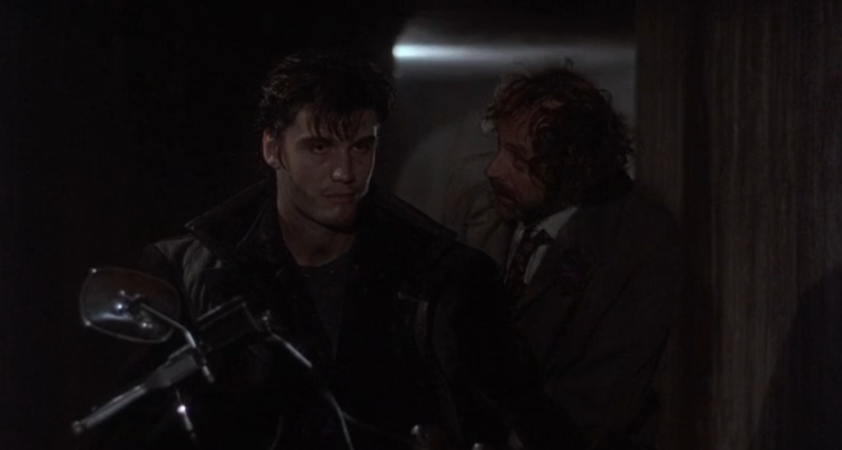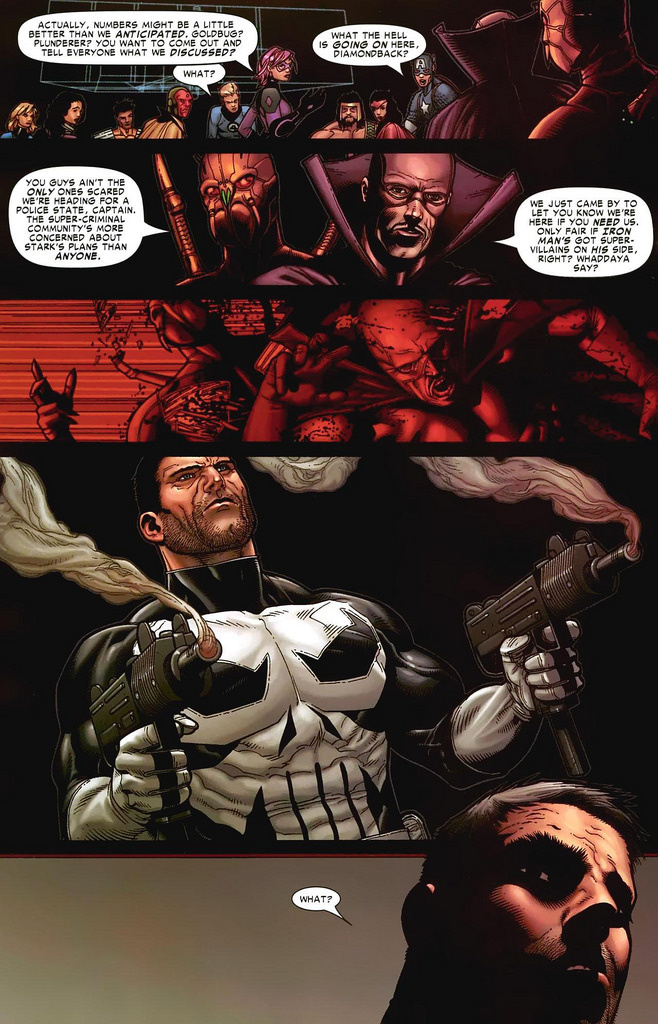I firmly believe that bad films cannot be made worse for spoilers but what follows reveals some plot points. This is part of a series looking at films from Marvel comics in the run-up to the release of Ryan Coogler’s The Black Panther.
One of the first films based on Marvel comics was the 1989 direct-to-video Punisher adaptation directed by Mark Goldblatt. Dolph Lundgren is Frank Castle with Jeroen Krabbé and Kim Miyori the main villains who are at odds both with each other and Castle (The Punisher). Miyori plays Lady Tanaka, the head of a yakuza organization taking over New York organized crime at the expense of the Italian families led by Gianni Franco (Krabbé). All the while Castle is being sought by his ex-partner and cop Jake Berkowitz (Lou Gossett Jr.).
Franco has returned to New York after the Punisher killed the other family leaders, leaving the mafia in a weakened state. Tanaka takes advantage of this and makes a power play by kidnapping all the mafioso’s children and then killing the parents when they arrive to negotiate a ransom. The cast of killers in that scene is quite funny. Franco forms a tentative alliance with the Punisher in order to save the children. They win the day in the end before Franco turns on Castle and tries to kill him and ends up dead. Solid performances by Gossett Jr. and Krabbé are undermined by Lundgren as Castle. He is at his least charismatic here, seems bored more than stone-faced, and has a bad stubble make-up.

Dolph Lundgren with fake stubble looking more dead bored than dead-eyed killer
Some folks immersed in or brought up in the Model Minority racist paradigm won’t remember so clearly the really intense Buy America campaigns of the late 1970s through early 1990s that peaked with Reaganite White Nationalism. They were not only “Buy America” but especially “Don’t buy Japan”. Much of this was centered around the auto industry and much of it had implicitly or explicitly racist themes, imagery and language. One famous example is Gung Ho, the 1986 Ron Howard film where a Japanese firm buys a US auto plant. The new bosses constantly yell at the workers in the way the US writers imagined they did at Japanese plants (which, without apologizing for Japan’s poor labor conditions, was and is not the case). There is an intended feel-good element to the film, that strand of U.S. liberalism that is simultaneously racist and anti-union under the guise of “can’t we all just get along?”. A second type of 1980s anti-Asian racism was the Rambo: First Blood Part II and Missing In Action type where Vietnamese people held and tortured U.S. POWs for a decade after Vietnam’s victory and it was up to Americans with machine guns to save them by slaughtering Vietnamese people by the hundreds.
Only American pluck can save the Japanese from overwork
The Punisher‘s plotline has to be contextualized in these popular conceptions. Because Lady Tanaka did not just kidnap the mafioso’s kids, she planned to sell them into slavery which was a key part of their criminal enterprise. “White slavery” was a popular storyline from the 1910s-1950s especially with Chinese and Japanese villains selling white women in pulps, dime store novels and films. The sexual threat posed by Asian men was an important component of “Yellow Peril” discourse, of which this film is very much a part. Asian “white slavery” rings weren’t invented just for this film, they are long a component of the white imagination (and not without crossover into conceptions of “human trafficking” by the way). Just a few years before The Punisher, Girls of the White Orchid, a made for tv movie starring Jennifer Jason Leigh, offered a feature length story on American television of an innocent white girl tricked into sex slavery by the yakuza. A more recent version is the 2008 film Taken where Liam Neesen must save his daughter from evil Arabs who buy her as a sex slave. Best I know, none of these narratives meaningfully looked at actual Japanese kidnapping of Korean women during Japan’s colonial rule there.

Lady Tanaka laughing evily
In the final scene Tanaka is for no clear reason wearing something like geisha make-up and costume, presumably to play up her alterity. Furthering this otherness, most of the yakuza killed during the final scene are men wielding swords while dressed in hakamas because….yakuza bring swords to gunfights I guess. Ya know, just because they’re organized crime doesn’t mean their crime is well organized! For context on this, Punisher is a hardcore fanatic. See as one example the page below from the Civil War storyline. Punisher has sided with Captain America against Iron Man and the government. Some supervillains have thrown in with Cap too, understanding the threat posed by the Registration Act that would add yet another felony charge to their everyday activities, this one for simply existing without registering their powers. When they reveal themselves Punisher immediately mows them down. When Cap flips out about this, Punisher says “they were killers and thieves”. In most iterations Punisher has no grey zone. So in the 1989 film it takes something really extraordinary for Castle to be working with Franco. That something is Japanese otherness.

Production wise this isn’t the worst Punisher film but, in close competition with the 2011 short film The Punisher: Dirty Laundry, is probably the most racist. This is the Marvel world into which in 47 days comes Ryan Coogler’s Black Panther. I wanna keep focus on that last sentence to contextualize how much work it will have taken to pull off a Black liberation vision within Marvel, if that is what Coogler’s film turns out to be.
Advertisements Regurgitate this:




